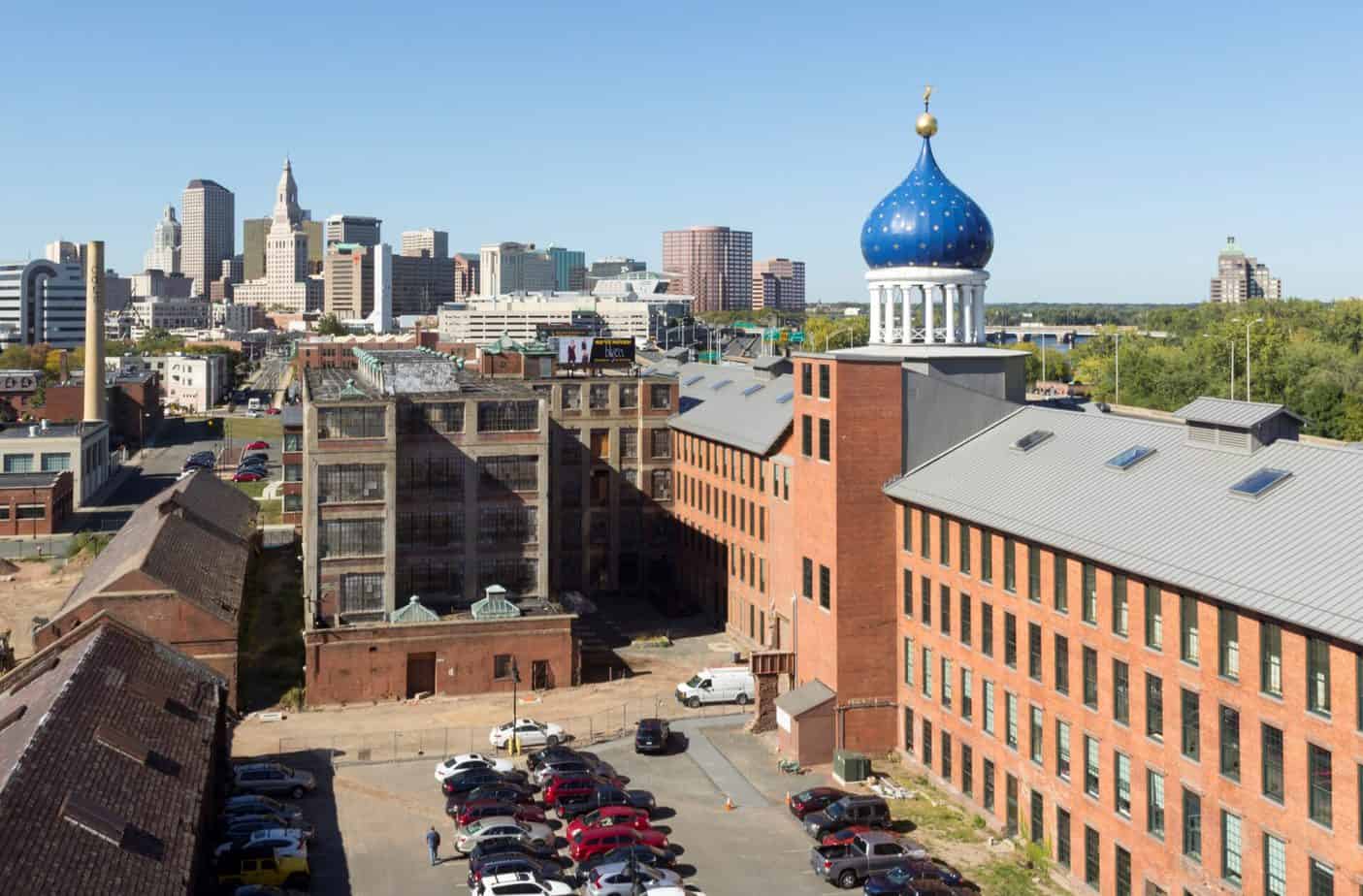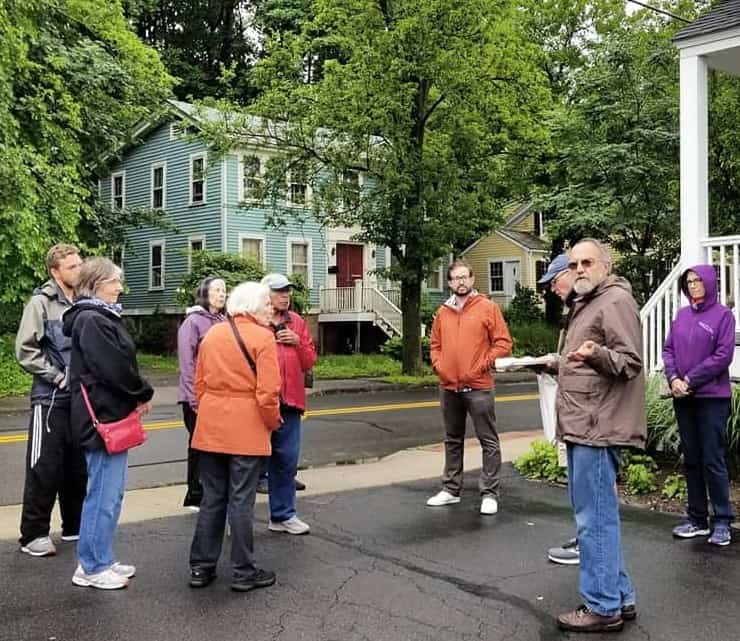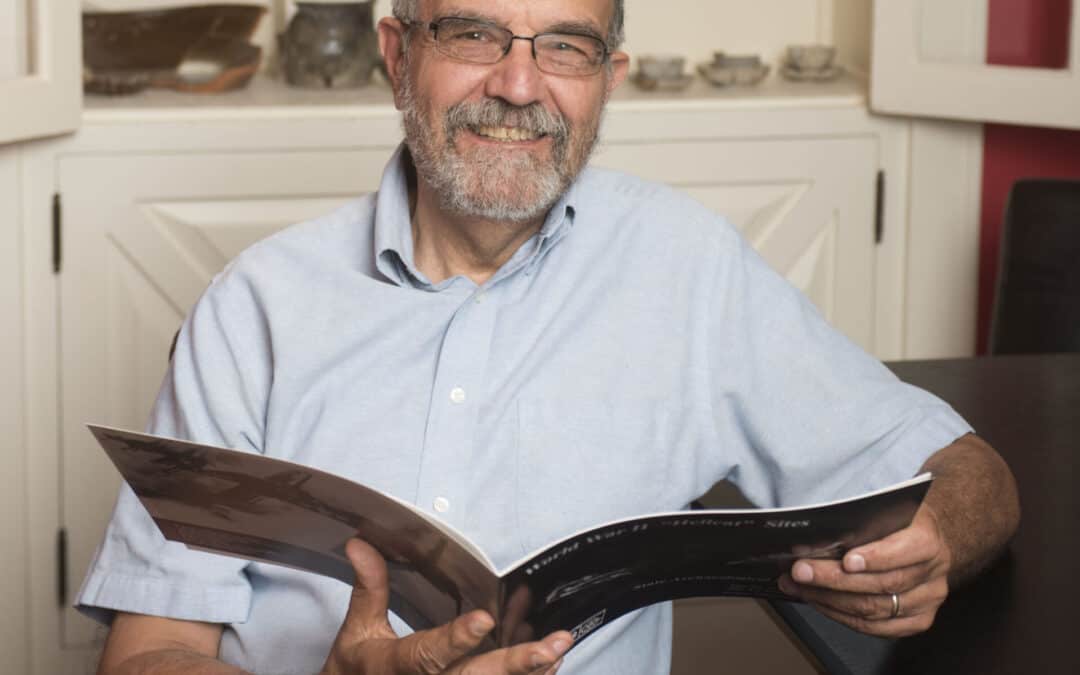If you want to preserve historic places, the first step is to know what they are. For more than forty years, the historian and historical consultant Bruce Clouette has sought out historic places across Connecticut and helped us understand not only what and where they are, but, crucially, why they matter.
Bruce’s work has spanned the spectrum of preservation-related historical research. He has done surveys to identify historic resources. He has written National and State Register nominations for hundreds, if not thousands, of buildings, districts, landscapes, and archaeological sites, as well as National

Historic Landmark studies for places as wide-ranging as Philip Johnson’s Glass House in New Canaan, the Coltsville historic district in Hartford, and the U.S. Coast Guard cutter Eagle. He has documented historic structures for the Historic American Buildings Survey and the Historic American Engineering Record.
In addition to research and designation, Bruce has produced cultural resource management reports to help governmental agencies oversee their historic properties, as well as environmental assessments to analyze the effects of public projects on historic resources. Some of those assessments led to mitigation projects to provide some balancing benefit for demolition. As a consultant he also works with architects and developers to and plan restoration and rehabilitation work to protect the character of historic buildings.
To spread the information he has uncovered, Bruce has written or co-written numerous books and articles, including histories of Hartford Hospital and the city of Bristol. He helped create exhibitions such as the permanent installation on the history of the Connecticut legislature at the Legislative Office Building in Hartford, and he has provided text for radio broadcasts and websites.
In this work, Bruce covers an astounding array of subjects, from colonial homesteads to immigrant communities, turn-of-the-century farm work, architecture of every type and period, mental health treatment, gravestone art, and highway and railroad bridges. But he is particularly known as the chronicler of Connecticut’s industrial and engineering history. Connecticut led the nation in industrialization, and still has a rich heritage of industrial sites. Bruce has taught us not only about mills and factories, but about systems for water and steam power, mill communities and the immigrant groups who peopled them, and the development of products that Connecticut sent around the world: textiles, clocks, machine tools, iron bridges, and more.

Bruce decided he wanted to study history for a living as a high-school freshman, thanks to a creative teacher who made history fun. As a college student he discovered local history, writing a senior thesis on New England mill towns. These early influences still shape his approach to history. “I love history as a puzzle,” he says, “making connections, solving puzzles, seeing things not seen by others.” In particular, he is drawn to local history, with its
focus on human actors rather than broad trends or movements. “It’s all done by people,” he says. “All the great national stories play out on the local level. Each community is built up by generations of individuals, and together it all adds up to the Great American Story.”
This focus on local, human history allows Bruce to find stories that others miss. It’s a common truism that history is written by the winners, but he looks for the also-rans, too—the technological dead ends, the unsuccessful enterprises, the forgotten players that are real parts of our past.
With his interest in tracking down the unexpected, his vivid explanations and his generosity in sharing what he knows, Bruce brings history to life. As one of his co-workers writes, “Driving on back roads throughout Connecticut with Bruce is a treat, with his lively and entertaining commentary on buildings, bridges, and local history along the way.”
All this is in service to preserving historic places. For Bruce, preservation is important for the same reason local history is: having touchstones of the past among us makes it clear that history doesn’t happen out there—it happens here. Preserving historic places makes history concrete and helps us to appreciate it as the product of human actors.
Furthermore, Bruce says preserving historic places is important for creating the future. “Historic sites teach us that what we have wasn’t always here—it was created. And they teach us that what we will have tomorrow can be our creation.” In other words, we have a responsibility to build well for future generations, just as past generations built well for us.
The Jainschigg award commemorates Janet G. Jainschigg, a founder and benefactor of Preservation Connecticut as well as a regional leader in historic preservation. She was a mentor and inspiration to many and, although a volunteer herself, always insisted on the highest standards of professionalism. For his scholarly excellence, his commitment to delving into the human stories that add up to History, and his skill and generosity in sharing his knowledge, Bruce Clouette exemplifies the professional excellence that the Janet Jainschigg Award celebrates.

